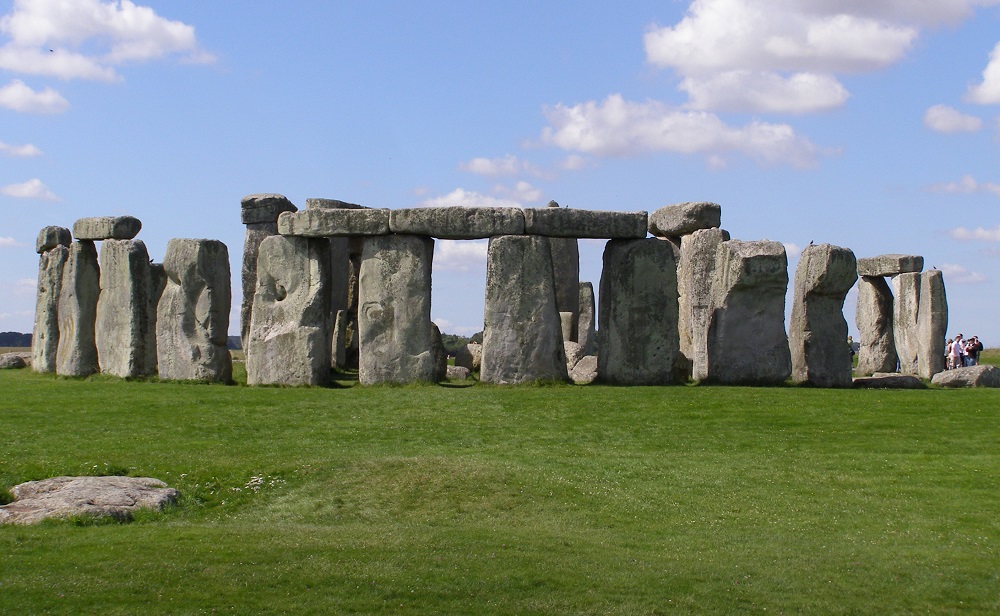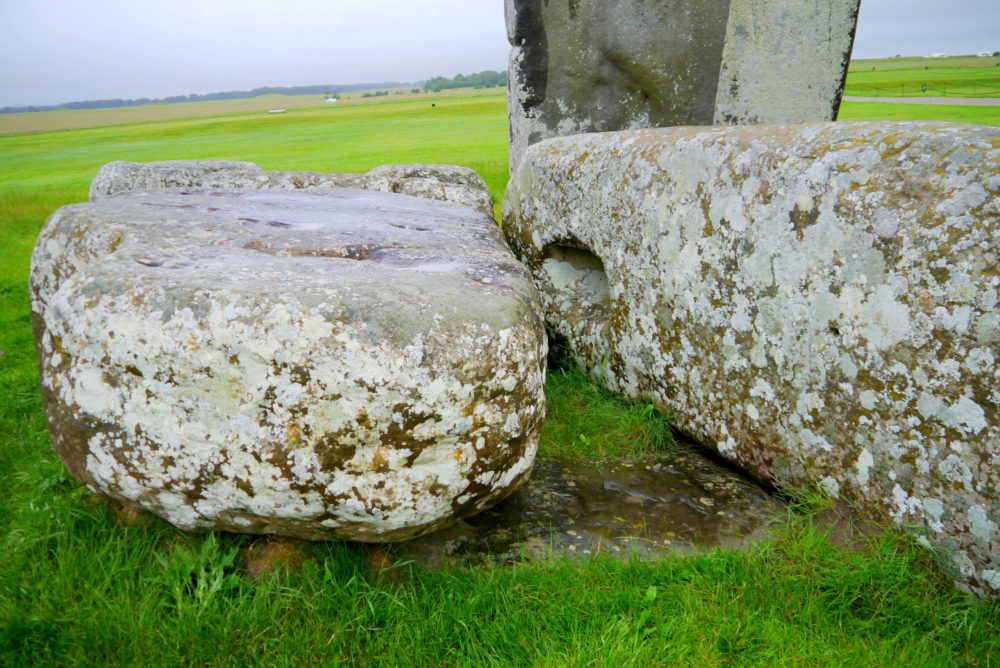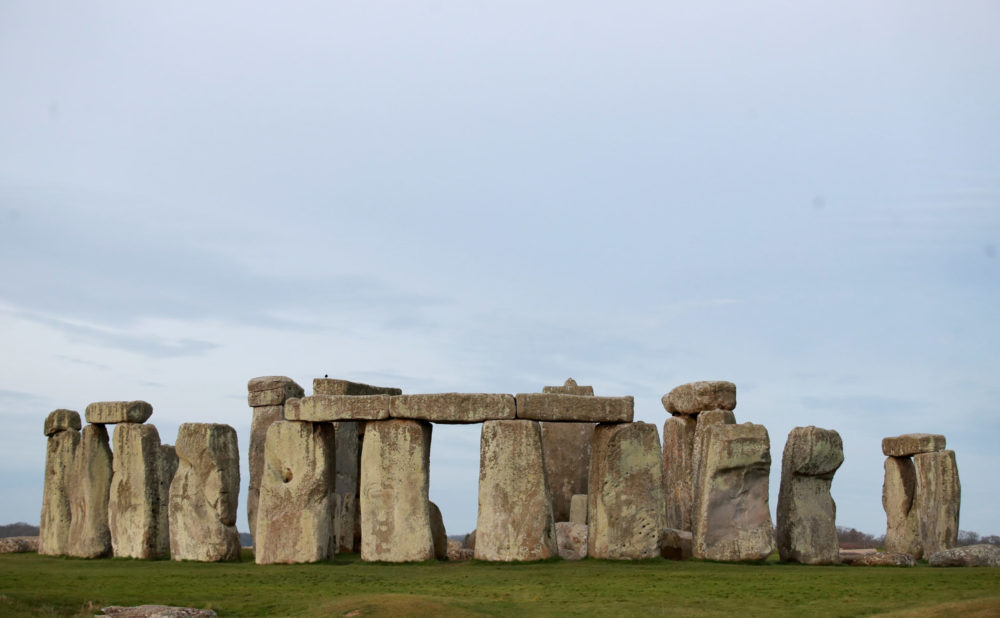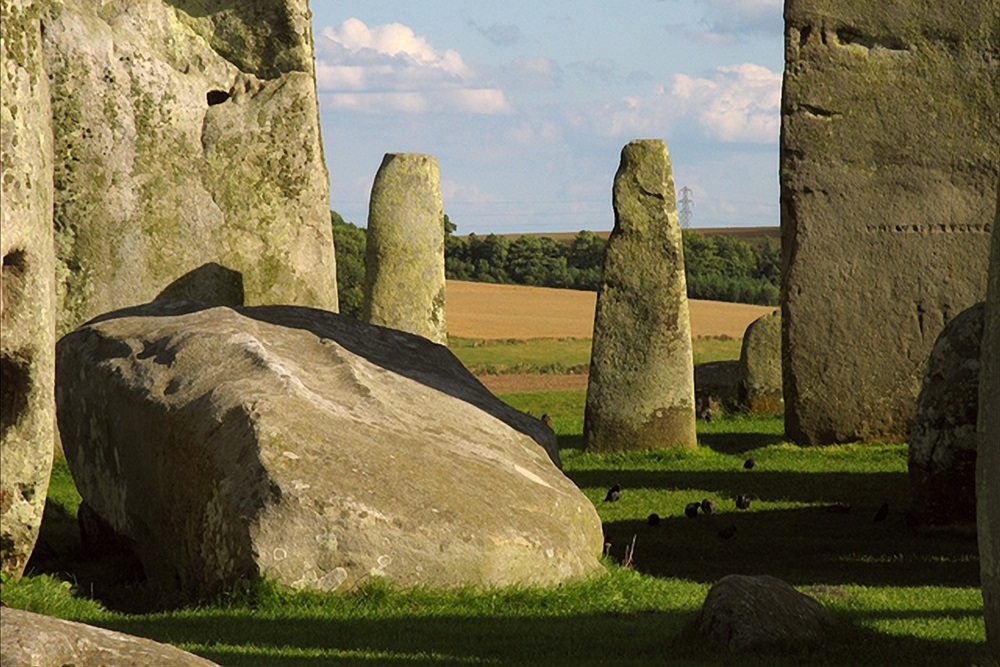Stonehenge Altar Stone was transported from Scotland not Wales, say scientists

The largest Altar Stone at the heart of Stonehenge is actually Scottish not Welsh, research suggests.
The “remarkable” discovery has left experts “stunned” and busts a century-long held belief about the origins of the bluestone at the centre of the prehistoric monument.
It is unclear when the stone arrived at the site on Salisbury Plain in Wiltshire, but the scientists say it may have been placed within the central horseshoe of stones during the second construction phase at about 2620–2480 BC.
It is also not known whether the now horizontal stone once stood upright.
Implication
The new discovery implies that one of the most famous stones in the world was moved much further than had been believed – at least 435 miles.
For the last century, the six-tonne sandstone, at the heart of the ancient site, was believed to have come from Wales, as the majority of Stonehenge’s bluestones came from the Preseli Hills area in west Wales and are believed to have been the first stones erected at the site.

The stone at the focus of this study has traditionally been grouped with these other, smaller bluestones.
However, the true origin of the Altar Stone had remained a mystery, until now.
After work to examine the stone’s chemical composition and mineral grains, scientists can say with 95% confidence that the sandstone is very likely to have come from north-east Scotland.
The study involved scientists at Aberystwyth University, University College London and, in Australia, Curtin University and the University of Adelaide.
The findings indicate a striking similarity between the Old Red Sandstone of the Orcadian Basin in north-east Scotland and the Stonehenge Altar Stone.

Co-author Professor Richard Bevins, from Aberystwyth University, said: “These findings are truly remarkable – they overturn what had been thought for the past century.
“We have succeeded in working out, if you like, the age and chemical fingerprints of, perhaps, one of the most famous of stones in the world-renowned ancient monument.
“It’s thrilling to know that our chemical analysis and dating work has finally unlocked this great mystery.
“We can now say that this iconic rock is Scottish and not Welsh.
“Although we can say that much, and confidently – the hunt will still very much be on to pin down where exactly in the north-east of Scotland the Altar Stone came from.”
The scientists used their analysis of the ages of the mineral grains in the stone to essentially create a fingerprint of the source of those grains.
They matched ages found in rocks of the Orcadian Basin found in the north-east of Scotland, and are completely different from Welsh-sourced stones.
Anthony Clarke, from the Timescales of Mineral Systems Group at Curtin University, in Perth, Western Australia, said: “Considering the technological constraints of the Neolithic, our findings raise fascinating questions about how such a massive stone was able to be transported over the vast distance implied.
“Given major overland barriers en route from north-east Scotland to Salisbury Plain, marine transport is one feasible option.”
Commenting on the findings, he added: “All four of us were stunned. We couldn’t believe it.”

Co-author Dr Robert Ixer, of the UCL Institute of Archaeology, said: “This is a genuinely shocking result, but if plate tectonics and atomic physics are correct, then the Altar Stone is Scottish.
“The work prompts two important questions: why and exactly how was the Altar Stone transported from the very north of Scotland, a distance of more than 700 kilometres, to Stonehenge?”
The research, published in the journal Nature, does not provide direct evidence about how the stone got to its world-famous location in Wiltshire.
But the revelation that it travelled so far will raise questions about its journey given the limits of human technology during Neolithic times.
“Huge ramifications”
The Altar Stone is classed as a bluestone, but is very different from the other ones at Stonehenge.
It is about twice the size of the smaller igneous bluestones, weighs six tonnes and is about five metres long, while the others are about a maximum of three tons.
Professor Nick Pearce, from Aberystwyth University, said: “This stone has travelled an awful long way – at least 700 kilometres – and this is the longest recorded journey for any stone used in a monument at that period. The distance travelled is astonishing for the time.
“While the purpose of our new, empirical research was not to answer the question of how it got there, there are obvious physical barriers to transporting by land, but a daunting journey if going by sea.
“There’s no doubt that this Scottish source shows a high level of societal organisation in the British Isles during the period.
“These findings will have huge ramifications for understanding communities in Neolithic times, their levels of connectivity and their transport systems.
“Hopefully, people will now start to look at the Altar Stone in a slightly different context in terms of how and when it got to Stonehenge, and where it came from.
“I am sure this will lead to some new thinking about the development of Stonehenge and its links to the rest of Neolithic Britain.”
Support our Nation today
For the price of a cup of coffee a month you can help us create an independent, not-for-profit, national news service for the people of Wales, by the people of Wales.







The work prompts two important questions: why and exactly how was the Altar Stone transported from the very north of Scotland, a distance of more than 700 kilometres, to Stonehenge?” That question should prompt a spate of “solutions” from the “It’s aliens what done it” brigade.
See Pearson’s theory of a unification of Britain at the time (my post below) Serious academic research nothing wacky.
Whatever happened to the stone that some fellow with Millenium/lottery?? loot and tried to move a small stone from the Welsh Hills but it fell off the boat in Milford Haven? I saw one pic where they used some plastic netting to try to move it. Did they have that in those times? Plastic netting?
Wonder if the National Lottery got their loot back. As Brychan mentions below probably used cattle to pull the stones on sledges.
Firstly, the claim that because the alter stone is said to be not from Wales negates our claim that we constructed the original Stonehenge a little disingenuous seeing the original henge was sourced from and constructed first in what is now South West Wales from a quarry in Pembrokeshire by people who were from that area. And that those neolithic people from West Wales responsible for its construction placed their ancestors ashes within the original pits where the first bluestones stood before being moved to Salisbury plain have been scientifically proven to be from the very place where the bluestones… Read more »
Yep, we aren’t allowed anything it seems. Not surprising really, you have to disposses an ancient culture of everything if you are to rename them and present them to the world as a young culture….as is the case English academia are trying with us. It does t matter who you attribute the content to, only that the world don’t see it as belonging to those that have been dispossessed of it.
We are ancient culture by any and all metrics available (contemporary to the Greeks), third oldest litrary language in Europe, oldest European festival, second oldest oral language in Europe. But we are presented as young as we use a young foreign term for ourselves.
Cannot understand why Professor Richard Bevins sees this as a ‘new discovery’. The first phase of construction, that of bluestones from Preseli were first erected as a circle in Pembrokeshire from local stone, then subsequently moved to Salisbury plain by man. The second phase of construction is completely different, thousand years later and are from collected as ‘erratics’, large bocks deposited by glaciers in the vicinity of Stonehenge during the last ice age, the flow being from the north east, and not transported large distances by man. The transportation of the original bluestones is not a mystery. Neolithic Britain was… Read more »
I thought that this was common knowledge? I vaguely remember seeing a documentary on this on Youtube (of all places) and a large section of the route they transported the stone can still be seen. As to the whys… it could be a gift offering considering there are some links that show a commom heritage between the Britons and the Picts from the Caledonian half of Scotland, even suggesting they didn’t speak the Goidelic language their Alba counterparts to the west did but actually spoke the same Brythonic tongue as the Britons did. If that is remotely true, I don’t… Read more »
And apparently it now makes it scottish according to sky and their “expert”, even though the Scoti wouldn’t be in Britain for another 2500 years. Scotland was inhabited by Britons and Picts long before they arrived. Anybody but the Britons, seriously, they want to disposses us of everything.
Just like the English dispossessed them of everything (also Ireland, and Wales the first project. Wales was the first colonial conquest and the others followed. Brexit was the most recent attempt of English hooligans to claim superiority with far right violence.
This really isn’t a big fuss discovery. It does lengthen the journey stones travelled to get there. Otherwise it fits neatly into existing theory. Mike Pearson’s major work on locating the Welsh bluestones quarry also found animal bones in Stonehenge feasting pits coming from all parts of Britain including Scotland. His theory is that Stonehenge was built as part of a unification of Britain drive. Pots and buildings at the time began to show similar styles in different regions. Stonehenge may even have been a project to get regional teams to work together. So a Scots stone fits in fine.